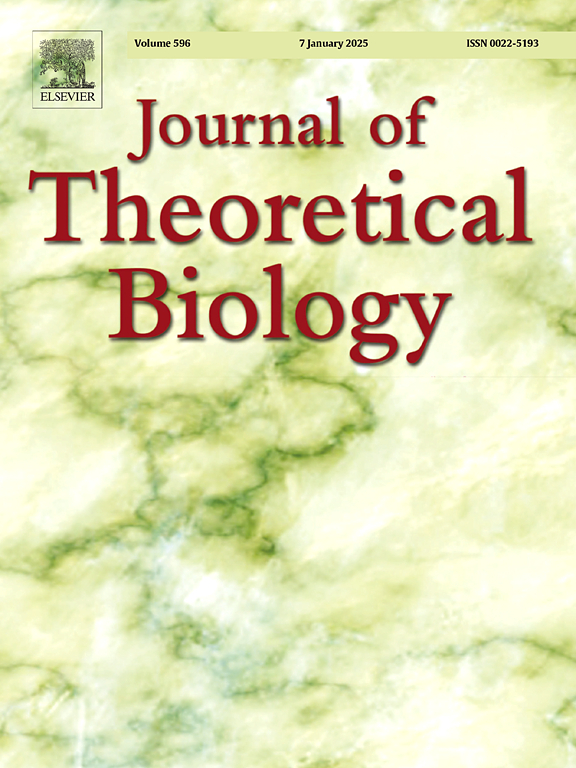用于癌症治疗的载药纳米颗粒:高通量多细胞药物模型研究。
IF 2
4区 数学
Q2 BIOLOGY
引用次数: 0
摘要
生物系统与工程纳米材料之间的相互作用由于其在医学上的应用而成为一个重要的研究领域。特别是,由于这种疾病的复杂生物学跨越多个时间和空间尺度,将纳米材料应用于癌症诊断和治疗的机会提出了挑战。通过数学建模和计算模拟的系统级分析来探索抗癌药物负载纳米颗粒(NPs)、细胞和组织之间的相互作用,以及相关的系统参数和患者反应将是有益的。尽管过去有许多模型探索了这些相互作用,但很少有模型专注于模拟单个细胞- np相互作用。本研究建立了一种基于多细胞药物的癌症纳米治疗模型,模拟了NP内化、细胞质内药物释放、子细胞分裂时NP的遗传、细胞对细胞内药物水平的药效学反应以及药物对肿瘤生长的总体影响。采用大规模并行计算框架研究药代动力学设计参数(NP内化率、NP衰减率、抗癌药物释放率)和治疗策略(NP剂量和注射频率)对肿瘤生长的影响。特别是,通过对细胞分裂时NP遗传的探索,结果表明,当细胞分裂时遗传NPs用于细胞毒性化疗时,可能会改善癌症治疗。此外,在细胞分裂未被完全抑制的情况下,小剂量的细胞抑制化疗也可提高对肿瘤生长的抑制作用。这项工作表明,遗传NPs的缓慢递送可以推动纳米治疗设计的新维度,以获得更持久的治疗反应。本文章由计算机程序翻译,如有差异,请以英文原文为准。
Drug-loaded nanoparticles for cancer therapy: A high-throughput multicellular agent-based modeling study
Interactions between biological systems and engineered nanomaterials have become an important area of study due to their application in medicine. In particular, the opportunity to apply nanomaterials for cancer diagnosis and treatment presents a challenge due to the complex biology of this disease, which spans multiple time and spatial scales. A systems-level analysis from mathematical modeling and computational simulation to explore the interactions between anticancer drug-loaded nanoparticles (NPs), cells, and tissues, and the associated system parameters and patient response would be of benefit. Although a number of models have explored these interactions in the past, few have focused on simulating individual cell-NP interactions. This study develops a multicellular agent-based model of cancer nanotherapy that simulates NP internalization, drug release within the cell cytoplasm, inheritance of NPs by daughter cells at cell division, cell pharmacodynamic response to intracellular drug levels, and overall drug effect on tumor growth. A large-scale parallel computational framework is used to investigate the impact of pharmacokinetic design parameters (NP internalization rate, NP decay rate, anticancer drug release rate) and therapeutic strategies (NP doses and injection frequency) on tumor growth. In particular, through the exploration of NP inheritance at cell division, the results indicate that cancer treatment may be improved when NPs are inherited at cell division for cytotoxic chemotherapy. Moreover, smaller dose of cytostatic chemotherapy may also improve inhibition of tumor growth when cell division is not completely inhibited. This work suggests that slow delivery by heritable NPs can drive new dimensions of nanotherapy design for more sustained therapeutic response.
求助全文
通过发布文献求助,成功后即可免费获取论文全文。
去求助
来源期刊
CiteScore
4.20
自引率
5.00%
发文量
218
审稿时长
51 days
期刊介绍:
The Journal of Theoretical Biology is the leading forum for theoretical perspectives that give insight into biological processes. It covers a very wide range of topics and is of interest to biologists in many areas of research, including:
• Brain and Neuroscience
• Cancer Growth and Treatment
• Cell Biology
• Developmental Biology
• Ecology
• Evolution
• Immunology,
• Infectious and non-infectious Diseases,
• Mathematical, Computational, Biophysical and Statistical Modeling
• Microbiology, Molecular Biology, and Biochemistry
• Networks and Complex Systems
• Physiology
• Pharmacodynamics
• Animal Behavior and Game Theory
Acceptable papers are those that bear significant importance on the biology per se being presented, and not on the mathematical analysis. Papers that include some data or experimental material bearing on theory will be considered, including those that contain comparative study, statistical data analysis, mathematical proof, computer simulations, experiments, field observations, or even philosophical arguments, which are all methods to support or reject theoretical ideas. However, there should be a concerted effort to make papers intelligible to biologists in the chosen field.

 求助内容:
求助内容: 应助结果提醒方式:
应助结果提醒方式:


